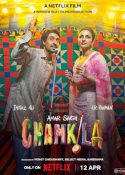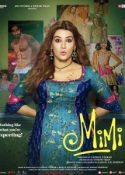 Dhobi Ghat.
Dhobi Ghat.
Two words that trigger a wealth of thoughts for Hindi cinema lovers. One of January’s most awaited releases, Kiran Rao’s directorial debut, an Aamir Khan production, Aamir’s first release post 3 Idiots. And above all, the plaudits it received at the Toronto Film Festival and London Film Week.
Attending a private screening organized by Spice PR on behalf of BollySpice, I have sat and agonized over writing this review for days. So where do I begin? Tagged Mumbai Diaries, the story is simple. Four individuals whose lives are somehow inextricably drawn together by chance.
I have to say from the onset, Dhobi Ghat is not your typical Bollywood Film, nor is its music your typical Bollywood chartbuster. If these are your expectations when you walk into the darkened theatre of your local cinema, save yourself the effort. You will hate it. There are no song and dance sequences. Neither Munni nor Sheila will be performing any latkha’s and jhatkha’s. There will be no sudden trips to Switzerland or Mauritius either. You are in Mumbai and that is where you will be staying. This is not necessarily a bad thing. I am just ensuring that you all understand the basic ideology behind the film.
Shot in multiple formats on very real locations throughout Mumbai, Dhobi Ghat pieces together fragments of these four very individual experiences and the manner in which they tie in with one another. This is sometimes done through the use of black and white stills, sometimes through a personal video letter and sometimes through the present day lives unfolding on screen. When brought together, it forms the four personal journeys that make up the story of Dhobi Ghat.
Taking a look at the stories, Rao shares two issues. One makes up the story of Arun; a reclusive painter who has spent time in many of Mumbai’s urban dwellings. Realizing the lease on his present accommodation is soon to expire, Arun looks to Old Mumbai for a possible new home. The reason behind this is simple. He hopes to escape the dreaded lease agreement that many Mumbaikar’s face. Arun’s search comes to an end with a flat in a multi occupancy block. It is in this flat that Arun finds company in the form of video letters left by the previous tenant Yasmin, a small town girl from Uttar Pradesh who moves to Mumbai to begin the next stage of her life as a married woman. Sharing her experiences visually with her brother Imran, it is Yasmin’s innocence that draws a fascinated Arun to her and her world.
 The second story looks at the possibility of two people from two different social standings falling in love. The two individuals that form that basis of this story are Shai, an investment banker from New York on sabbatical in Mumbai to work on a photography project and Munna, a dhobi whose ambition in life is to become a Bollywood hero. Munna promises to show Shai the real Mumbai in exchange for a portfolio that will help him realise his dream. Unaware of the class system that is largely prevalent throughout India and the general treatment meted out to India’s domestic workers, Shai gives Munna the same level of respect she would give anyone else, and it is this treatment that Munna interperates as love.
The second story looks at the possibility of two people from two different social standings falling in love. The two individuals that form that basis of this story are Shai, an investment banker from New York on sabbatical in Mumbai to work on a photography project and Munna, a dhobi whose ambition in life is to become a Bollywood hero. Munna promises to show Shai the real Mumbai in exchange for a portfolio that will help him realise his dream. Unaware of the class system that is largely prevalent throughout India and the general treatment meted out to India’s domestic workers, Shai gives Munna the same level of respect she would give anyone else, and it is this treatment that Munna interperates as love.
Dhobi Ghat is in essence Kiran Rao’s attempt to tell these four stories as well as an attempt to capture Mumbai from several different perspectives. Though the issues are quite separate the stories entwine with each other at specific point quite cleverly. Kiran Rao manages to not only tell four personal accounts of life but also manages to tell the story of a city and she does this by capturing the cities very soul through sight and sound, thus revealing a Mumbai of many faces – some that are known and some that are unknown. Is her attempt successful? I would say so.
Moving on to the films four leads – beginning with Monica Dogra, the first of our debutants. Dogra as Shai is effective. In the relationship shown between Munna and Shai, Shai represents the life of luxury, the lifestyle that many of the cities inhabitants aspire to achieve, the exact opposite of Prateik ’s Munna. I can understand why she agreed to the role and her scenes with Prateik are a delight to watch, though she is somewhat overshadowed by Prateik. I am not sure about her scenes with Aamir – I feel there was some chemistry lacking there.
She shows promise of great things to come if she chooses to continue with acting – the rest waits to be seen.
 Aamir Khan. I think it is fair to say that of late when one hears the name Aamir Khan one instantly associates the words box office hit with it and anything that it may be linked to. I can understand why Aamir Khan wanted to enact the role of Arun. Returning to the role of an artist Aamir Khan, enacts the reclusive painter beautifully. The subtleties and the occasional brute honesty are a far cry from Aamir’s Rancho in his last release 3I and that is what one has to take the time to appreciate. In the film you see Arun and not Aamir and I think that is the mark of a great actor. To become the character you want the world to see and Aamir manages to do that quite successfully.
Aamir Khan. I think it is fair to say that of late when one hears the name Aamir Khan one instantly associates the words box office hit with it and anything that it may be linked to. I can understand why Aamir Khan wanted to enact the role of Arun. Returning to the role of an artist Aamir Khan, enacts the reclusive painter beautifully. The subtleties and the occasional brute honesty are a far cry from Aamir’s Rancho in his last release 3I and that is what one has to take the time to appreciate. In the film you see Arun and not Aamir and I think that is the mark of a great actor. To become the character you want the world to see and Aamir manages to do that quite successfully.
Kiriti Malholtra’s Yasmin is seen far less on screen than Dogra yet she manages to steal the show between the two. Her performance as a sweet, na











